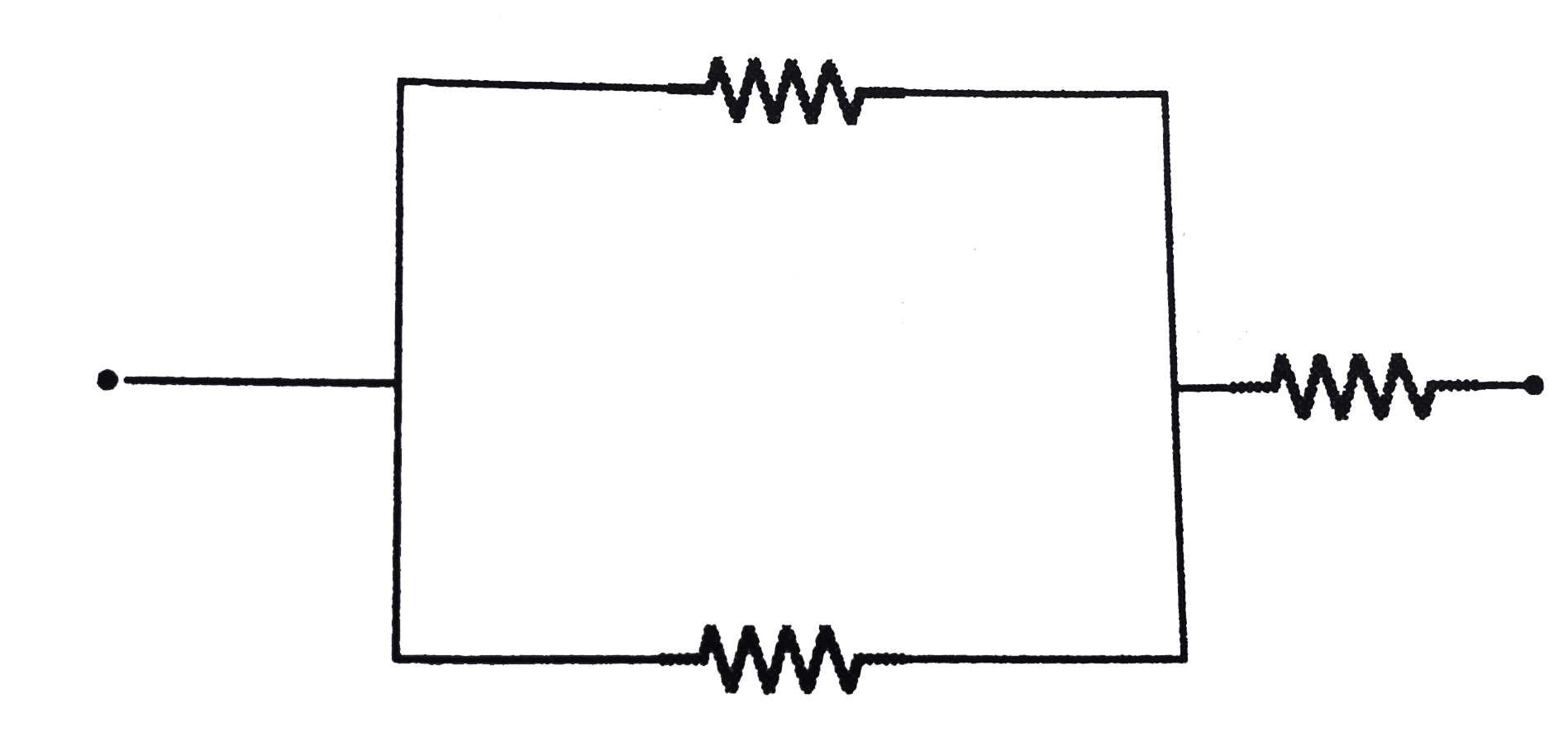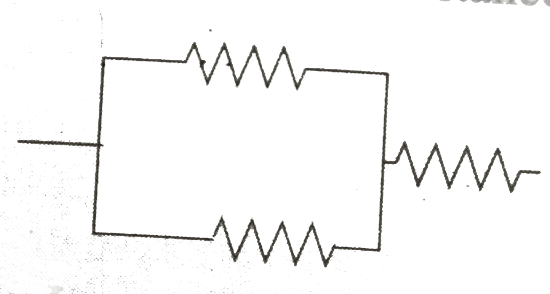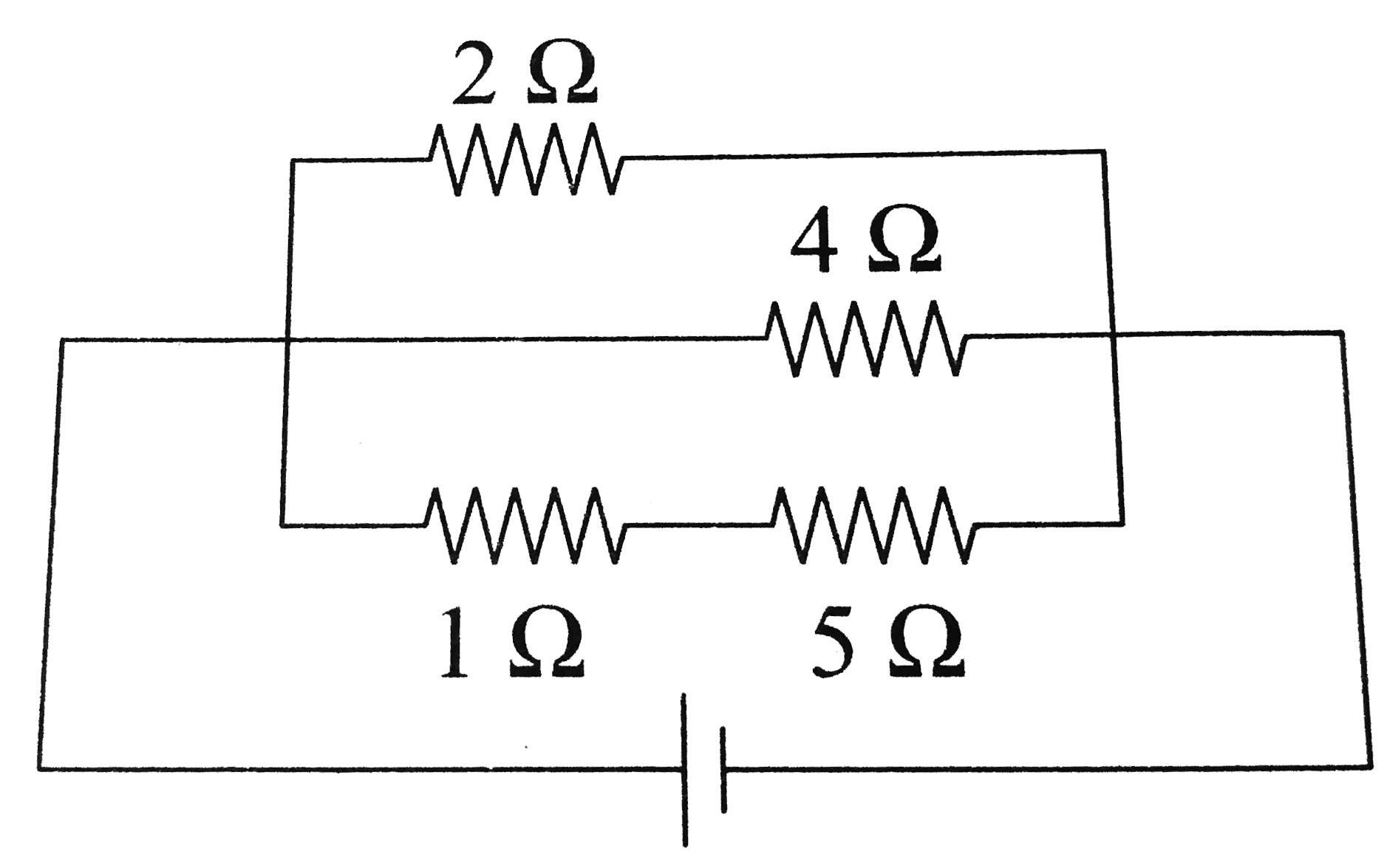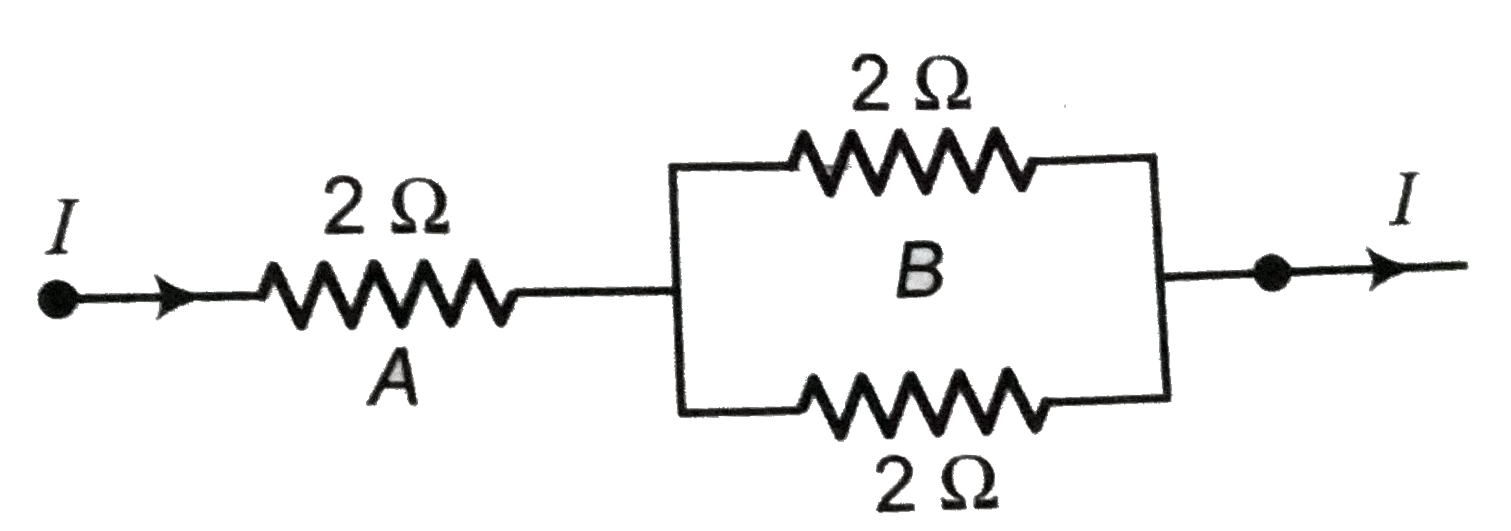Three 2Ω resistors, A, B and C, are connected as shown in figure. Each of them dissipates energy and can withstand a maximum power of 18 W without melting. Find the maximum current that can flow through the three resistors?
 Solution in Kannada
Solution in Kannada
Given power P = 18 W.
Since current through resistors connected in series is same, current through resistor A and combination of B and C will be the same.
Using P=I2R⇒I=√PR
Maximum current through resistor A=√18√2=3A. This current divides itself equally while flowing through B and C since B and C have equal values. Thus, the maximum current through resistors B and C each, 3×0.5=1.5A.
Topper's Solved these Questions
- ELECTRICITYBOOK - ZEN PUBLICATIONCHAPTER - ELECTRICITYEXERCISE - ZEN ADDITIONAL QUESTIONS SECTION (LONG ANSWER QUESTIONS)
30 Videos
- ELECTRICITYBOOK - ZEN PUBLICATIONCHAPTER - ELECTRICITYEXERCISE - ZEN ADDITIONAL QUESTIONS SECTION (MULTIPLE CHOICE QUESTIONS)
60 Videos
- ELECTRICITYBOOK - ZEN PUBLICATIONCHAPTER - ELECTRICITYEXERCISE - ZEN ADDITIONAL QUESTIONS SECTION (SHORT ANSWER TYPE 1 QUESTIONS)
40 Videos
- LIGHT - REFLECTION AND REFRACTIONBOOK - ZEN PUBLICATIONCHAPTER - LIGHT - REFLECTION AND REFRACTIONEXERCISE - ZEN ADDITIONAL QUESTIONS SECTION (LONG ANSWER [LA] QUESTIONS)
30 Videos
Similar Questions
State Ohm's law? How can it be verified experimentally? Does it hold good under all conditions? Comment.
View SolutionA cell, a resistor, a key and ammeter are arranged as shown in the circuit diagrams. The current recorded in the ammeter will be

View SolutionWhat is nichrome? State its one use.
View SolutionDraw ray diagrams showing the image formation by a concave mirror when an object is placed.
(a) between pole and focus of the mirror
(b) between focus and centre of curvature of the mirror
(c ) at centre of curvature of the mirror
(d) a little beyond centre of curvature of the mirror
(e ) at infinity
View SolutionEach of three resistors in figure has a resistance of 2.4Ω and can dissipate a maximum of 36 W without becoming excessively heated. What is the maximum power the circuit can dissipate?

View SolutionEach of three resistors in fig. 7.12 has a resistance of 2Ω and can dissipate a maximum of 18W without becoming excessively heated. Find the maximum power the circuit can dissipate.

View SolutionThree 2 Omega reistors , A,B and C , are connected as shown in (Fig. 3.44). Each of them dissipates energy and can withstand a maximum current that can flow through the three resistors ? .
View SolutionDraw a circuit diagram of an electric circuit containing a cell, a key, an ammeter, a resistance of 4 Omega in series with a combination of two resistors (8 Omega) in parallel and a voltmeter across the parallel combination. Each of them dissipate maximum energy and can withstand a maximum power of 16 W without melting. Find the maximum current that can flow through the three resistors.
View SolutionA current of 3A flows through the 2Ω resistor as shown in the circuit. The power dissipated in the 5Ω resistor is

View SolutionThree 200Ω resistors are connected as shown in figure. The maximum power that can be dissipated in any one of the resistor is 50 W. Find the total power in watts dissipated in the circuit for maximum voltage across the terminals A and B.

View SolutionThree 2Ω resistors, A, B and C are connected as shown in figure. Each of them dissipates energy and can with stand a maximum power of 18 W without melting. Find the maximum current that can flow through the three resistors ?

View SolutionDraw a circuit diagram of an electric circuit containing a cell, a key, an ammeter, a resistance of 4Ω in series with a combination of two resistors (8Ω) in parallel and a voltmeter across the parallel combination. Each of them dissipate maximum energy and can withstand a maximum power of 16W without melting. Find the maximum current that can flow through the three resistors.
View SolutionThree 200Omega resistors are connected as shown in figure. Any of these resistors breaks down if the rate of heat dissipation in it exceeds 50 W. Then, the maximum rate of total heat dissipation in the three resistors together is __________ W.
View SolutionA current of 3 A flows through the 2Ω resistor shown in the circuit. The power dissipated in the 5 Ω resistor is

View SolutionThree 2Ω resistors, A, B and C are connected as shown in figure. Each of them dissipates energy and can with stand a maximum power of 18 W without melting. Find the maximum current that can flow through the three resistors ?

View Solution
